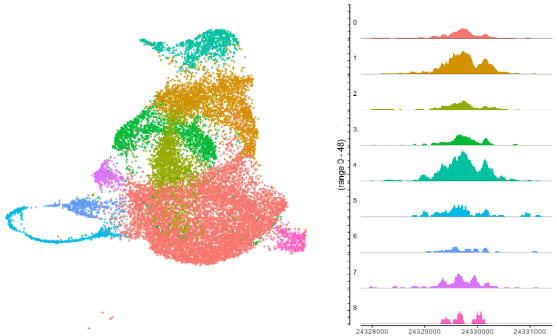
Enteric neurons derive from neural crest cells during embryogenesis, and later in life neurons can be generated from enteric glial cells. We seek to understand how epigenetic regulation and gene expression changes cause neuronal precursors to become neurons. To do this, we utilize cutting-edge single-cell sequencing tools, including single-cell RNA sequencing, single-cell ATAC sequencing, single-cell CUT&Tag, and single-cell multiome technology. Analyzing individual cells allows us to resolve heterogeneous cell populations and identify the signaling pathways and transcriptional networks driving neuronal fate specification. Studying the pathways and factors we identify in sequencing studies helps us innovate new techniques to generate large numbers of neurons for therapeutic applications.
